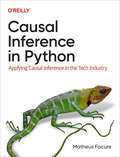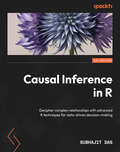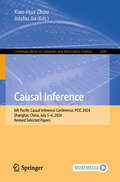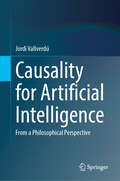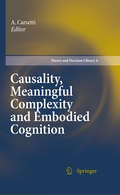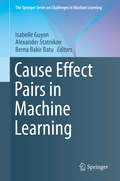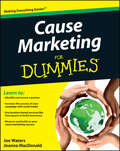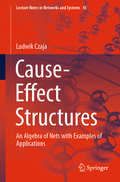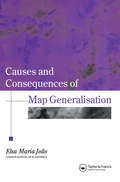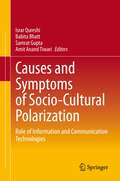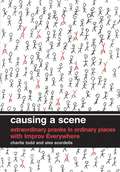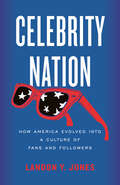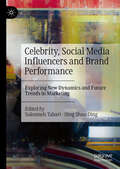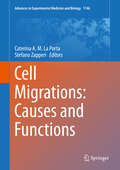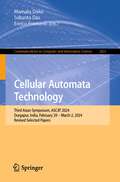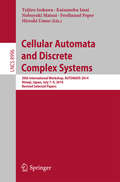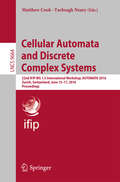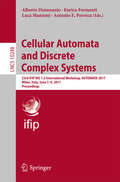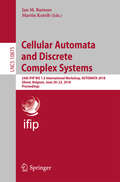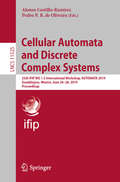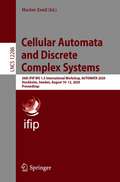- Table View
- List View
Causal Inference in Python: Applying Causal Inference in the Tech Industry
by Matheus FacureHow many buyers will an additional dollar of online marketing bring in? Which customers will only buy when given a discount coupon? How do you establish an optimal pricing strategy? The best way to determine how the levers at our disposal affect the business metrics we want to drive is through causal inference.In this book, author Matheus Facure, senior data scientist at Nubank, explains the largely untapped potential of causal inference for estimating impacts and effects. Managers, data scientists, and business analysts will learn classical causal inference methods like randomized control trials (A/B tests), linear regression, propensity score, synthetic controls, and difference-in-differences. Each method is accompanied by an application in the industry to serve as a grounding example.With this book, you will:Learn how to use basic concepts of causal inferenceFrame a business problem as a causal inference problemUnderstand how bias gets in the way of causal inferenceLearn how causal effects can differ from person to personUse repeated observations of the same customers across time to adjust for biasesUnderstand how causal effects differ across geographic locationsExamine noncompliance bias and effect dilution
Causal Inference in R: Decipher complex relationships with advanced R techniques for data-driven decision-making
by Subhajit DasMaster the fundamentals to advanced techniques of causal inference through a practical, hands-on approach with extensive R code examples and real-world applicationsKey FeaturesExplore causal analysis with hands-on R tutorials and real-world examplesGrasp complex statistical methods by taking a detailed, easy-to-follow approachEquip yourself with actionable insights and strategies for making data-driven decisionsPurchase of the print or Kindle book includes a free PDF eBookBook DescriptionDetermining causality in data is difficult due to confounding factors. Written by an applied scientist specializing in causal inference with over a decade of experience, Causal Inference in R provides the tools and methods you need to accurately establish causal relationships, improving data-driven decision-making. This book helps you get to grips with foundational concepts, offering a clear understanding of causal models and their relevance in data analysis. You’ll progress through chapters that blend theory with hands-on examples, illustrating how to apply advanced statistical methods to real-world scenarios. You’ll discover techniques for establishing causality, from classic approaches to contemporary methods, such as propensity score matching and instrumental variables. Each chapter is enriched with detailed case studies and R code snippets, enabling you to implement concepts immediately. Beyond technical skills, this book also emphasizes critical thinking in data analysis to empower you to make informed, data-driven decisions. The chapters enable you to harness the power of causal inference in R to uncover deeper insights from data. By the end of this book, you’ll be able to confidently establish causal relationships and make data-driven decisions with precision.What you will learnGet a solid understanding of the fundamental concepts and applications of causal inferenceUtilize R to construct and interpret causal modelsApply techniques for robust causal analysis in real-world dataImplement advanced causal inference methods, such as instrumental variables and propensity score matchingDevelop the ability to apply graphical models for causal analysisIdentify and address common challenges and pitfalls in controlled experiments for effective causal analysisBecome proficient in the practical application of doubly robust estimation using RWho this book is forThis book is for data practitioners, statisticians, and researchers keen on enhancing their skills in causal inference using R, as well as individuals who aspire to make data-driven decisions in complex scenarios. It serves as a valuable resource for both beginners and experienced professionals in data analysis, public policy, economics, and social sciences. Academics and students looking to deepen their understanding of causal models and their practical implementation will also find it highly beneficial.
Causal Inference: 6th Pacific Causal Inference Conference, PCIC 2024, Shanghai, China, July 5–6, 2024, Revised Selected Papers (Communications in Computer and Information Science #2200)
by Xiao-Hua Zhou Jinzhu JiaThis book constitutes the revised selected papers of the 6th Pacific Causal Inference Conference, PCIC 2024, held in Shanghai, China, during July 5–6, 2024. The 8 papers included in these proceedings were carefully reviewed and selected from 15 submissions. They aim to promote research and developmental activities in the fields of Causal Inference and Artificial Intelligence.
Causality for Artificial Intelligence: From a Philosophical Perspective
by Jordi VallverdúHow can we teach machine learning to identify causal patterns in data? This book explores the very notion of “causality”, identifying from a naturalistic and evolutionary perspective how living systems deal with causal relationships. At the same time, using this knowledge to identify the best ways to apply such biological models in machine learning scenarios. One of the more fundamental challenges for AI experts is to design machines that can understand the world, identifying the basic rules that govern reality. Statistics are powerful and fundamental for this process, but they are only one of the necessary tools. Counterfactual thinking is the other part of the necessary process that will help machines to become intelligent. This book explains the paths that can lead to algorithmic causality. It is essential reading for those who are not afraid of thinking at the interface of various academic disciplines or fields (AI, machine learning, philosophy, neuroscience, anthropology, psychology, computer sciences), and who are interested in the analysis of causal thinking and the ways in which cognitive systems (natural or artificial) can act in order to understand their environment. Professor Vallverdú is currently working on biomimetic cognitive architectures and multicognitive systems. His research has explored two main areas: epistemology and cognition. Since his early Ph.D. research on epistemic controversies, he has analyzed several aspects of computational epistemology. His latest research has focused on the causal challenges of machine learning techniques, particularly deep learning. One of his most promising advances is statistics meets causal graph reasoning (via Directed Acyclic Graphs), which still has several conceptual paths that need to be explored and identified. Counterfactual reasoning is a fundamental part of these open debates, which are under the analysis of Prof. Vallverdú. His current research is supported as part of the following projects: GEHUCT and ICREA Acadèmia.
Causality, Meaningful Complexity and Embodied Cognition (Theory and Decision Library A: #46)
by A. CarsettiWith respect to the possible outlining of new models of the process of knowledge construction, we are really faced, at the moment, with the appearance of a new frontier: a frontier that appears strictly linked to the emergence of a conceptual revolution at the level of the analysis of that peculiar entanglement of complexity, information, causality, meaning, emergence, teleology and intentionality that characterizes the unfolding of the "natural forms" of human cognition. To recognize some of the peculiar knots of this particular conceptual revolution precisely constitutes the first target of the volume. Cognitive activity is rooted in Reality, but at the same time represents the necessary means whereby Reality can embody itself in an objective way: i.e., in accordance with an in-depth nesting process and a surface unfolding of operational meaning. In this sense, the objectivity of Reality is also proportionate to the autonomy reached by cognitive processes. Within this conceptual framework, reference procedures thus appear as related to the modalities providing the successful constitution of the channel, of the actual link, in particular, established at the neural level between operations of vision and thought. Such procedures ensure not a simple "regimentation" or an adequate replica, but, on the contrary, the real constitution of a cognitive autonomy in accordance with the truth. A method thus emerges which is simultaneously project, telos and regulating activity: a code that becomes process, positing itself as the foundation of a constantly renewed synthesis between function and meaning. In this sense, at the level of cultural evolution, reference procedures act as guide, mirror and canalisation with respect to primary information flows and involved selective forces. They also constitute a precise support for the operations which "imprison" meaning and "inscribe" the "file" considered as an autonomous categorial (and generating) system. In this way, they offer themselves as the actual instruments for the constant renewal of the code, for the invention and the actual articulation of an ever-new incompressibility.
Causality, Probability, and Time
by Samantha KleinbergCausality is a key part of many fields and facets of life, from finding the relationship between diet and disease to discovering the reason for a particular stock market crash. Despite centuries of work in philosophy and decades of computational research, automated inference and explanation remains an open problem. In particular, the timing and complexity of relationships has been largely ignored even though this information is critically important for prediction, explanation, and intervention. However, given the growing availability of large observational datasets including those from electronic health records and social networks, it is a practical necessity. This book presents a new approach to inference (finding relationships from a set of data) and explanation (assessing why a particular event occurred), addressing both the timing and complexity of relationships. The practical use of the method developed is illustrated through theoretical and experimental case studies, demonstrating its feasibility and success.
Cause Effect Pairs in Machine Learning (The Springer Series on Challenges in Machine Learning)
by Isabelle Guyon Alexander Statnikov Berna Bakir BatuThis book presents ground-breaking advances in the domain of causal structure learning. The problem of distinguishing cause from effect (“Does altitude cause a change in atmospheric pressure, or vice versa?”) is here cast as a binary classification problem, to be tackled by machine learning algorithms. Based on the results of the ChaLearn Cause-Effect Pairs Challenge, this book reveals that the joint distribution of two variables can be scrutinized by machine learning algorithms to reveal the possible existence of a “causal mechanism”, in the sense that the values of one variable may have been generated from the values of the other. This book provides both tutorial material on the state-of-the-art on cause-effect pairs and exposes the reader to more advanced material, with a collection of selected papers. Supplemental material includes videos, slides, and code which can be found on the workshop website.Discovering causal relationships from observational data will become increasingly important in data science with the increasing amount of available data, as a means of detecting potential triggers in epidemiology, social sciences, economy, biology, medicine, and other sciences.
Cause Marketing For Dummies
by Joe Waters Joanna MacdonaldCreate a mutually beneficial partnership between nonprofit and for-profit enterprises Cause marketing creates a partnership with benefits for both a nonprofit entity and a business. Written by an expert on cause marketing whose blog, SelfishGiving. com, is a key resource on the subject, this friendly guide shows both business owners and marketers for nonprofits how to build and sustain such a partnership using social media such as Facebook and Twitter. It covers new online tools, how to identify potential partners, tips on engaging your fans, and how to model a campaign on proven successes. Cause marketing is not marketing a cause, but a partnership between business and nonprofit that benefits both This guide offers an easy-to-understand blueprint for finding appropriate partners, planning and setting up a campaign using Facebook, Twitter, and blogs, measuring campaign success, and more Explains online tools such as Quick Response Codes, services like Causon and The Point, and location marketing services including Foursquare, Whrrl, and Gowalla Features case studies that illustrate successful campaign techniques Cause Marketing For Dummies helps both businesses and nonprofits reap the benefits of effective cause marketing.
Cause-Effect Structures: An Algebra of Nets with Examples of Applications (Lecture Notes in Networks and Systems #45)
by Ludwik CzajaThis book presents a new algebraic system whose interpretation coincides with the behaviour of Petri nets, enhanced with an inhibitory mechanism and four time models. Its goal is to provide a formal means of modelling dynamic tasks, and of testing and verifying properties, in contexts characterised by the parallel execution of actions. However, the task description differs from that of Petri nets. The algebra is a quasi-semiring, “quasi” because of its somewhat restricted distributivity axiom. Expressions of this algebra, the cause–effect structures, have a graphic presentation as nets, but with one kind of named nodes, each annotated by two expressions that specify the type of signal reception from predecessors and transmission to successors. Many structural and behavioural properties are stated with proofs, and illustrative sample tasks are included. The book is intended for all those interested or involved in parallel and distributed computing – students, researchers and practitioners alike.
Causes And Consequences Of Map Generalization
by Elsa JoaoThis text describes late-1990s understanding of map generalisation in the context of paper maps and GIS. Its particular value should be in helping to further automate and measure the process of map generalisation.; The research has concentrated on quantifying generalisation effects and on analysing how these effects of generalisation locked into the maps were measured. Elsa Joao's book covers the background to the problems of map generlasation; the methodology developed by the author to investigate the consequences of the map generalisation; a detailed description of results, and a conclusion that draws together consequences for the broader applications to GIS.
Causes and Symptoms of Socio-Cultural Polarization: Role of Information and Communication Technologies
by Israr Qureshi Babita Bhatt Samrat Gupta Amit Anand TiwariThis book explores cultural polarization resultant decline in social cohesion in society and how information and communication technologies exacerbate the cultural polarization through phenomenon such as “echo chambers” of information that damage the quality of online discourse. This book examines the nature of the information that is shared. Further this book identifies how the quality of online discourse and polarization induced through it leads to offline harm and negative outcomes in our society. This book discusses how wide-ranging information exchange on digital media can lead to two scenarios, namely, the formation of the public sphere or the formation of echo chambers. While the public sphere, which promotes greater diversity, is a well-researched domain, substantially less research has been conducted on echo chambers in relation to sociocultural activities, products or services. This book states that polarization induced by the formation and evolution of echo chambers in sociocultural realm such as around epidemic outbreaks, vaccination, healthcare, education, and climate change is an emerging avenue of research due to its enormous impact in the shaping of our society. Therefore, this book argues that understanding the characteristics of sociocultural products related controversies is critical and valuable in developing interventions to reduce unhealthy societal and organizational polarisations. The development of systematic knowledge is required to understand and address such a large scale and complex societal challenge so as to facilitate a deeper understanding and offer solutions to the growing issue of polarization in sociocultural context driven primarily through echo chambers. This book examines how technology enabled social media usage increases, and the complex structural outcomes such as echo chambers are likely to have an increasingly important role in shaping public opinion. This book appeals to readers with interest in developing a deeper and broader understanding of issues and initiatives related to the polarization of opinions on cultural products. These include readers and scholars from various disciplines, along with engaged organizational leaders, activists, policy makers, and common citizens.
Causing a Scene: Extraordinary Pranks in Ordinary Places with Improv Everywhere
by Charlie Todd Alex ScordelisImprov Everywhere has been responsible for some of the most original and subversive pranks of the Internet age.
Cazador de Monstruos Los Chistes y Memes más Divertidos y Épicos
by Joke FactoryVas a descubrir las bromas más divertidas de Cazadores de Monstruos. Este libro está lleno de algunas de las bromas más divertidas de Cazadores de Monstruos. ¡Descubra los temas más populares de Monster Hunter Corporation junto con tontos, ridículos y simplemente divertidos chistes y memes sobre ellos! ¡Desacargue su copia instantáneamente! ¡Comparalo hoy y descubre los chistes más populares para Cazador de Monstruos!
Celebrity Nation: How America Evolved into a Culture of Fans and Followers
by Landon JonesA former People magazine editor reveals how our cult of celebrity has shaped our politics, our culture, and our personal lives—for better or worseFrom the writer and editor who coined the term &“baby boomer&” comes Celebrity Nation, an exploration into how and why fame no longer stems only from heroic achievements but from the number of &“likes&” and shares—and what this change means for American culture. Landon Jones—who spent decades in &“celebrityland&” only to emerge, like Alice, blinking in the sunlight—brings a personal and first-person perspective on fame and its dark underbelly, complicated even further by the arrival of the internet and social media.Jones draws on his experience as the former managing editor of People magazine to bolster his account with profiles of celebrities he knew personally, ranging from Malcolm X to Princess Diana, as well as observations about contemporary social media stars like Kim Kardashian and computer-generated macro-influencer Miquela, a self-proclaimed &“19-year-old Robot living in LA.&” In analyzing the stories of over 75 celebrities, spanning decades and industries, Jones shows how celebrity has been wielded as a weapon of mass distraction to spawn narcissism, harm, and loneliness.And yet, in these stories we also see a path forward. Jones highlights luminaries like Nobel Peace prize winner Maria Ressa and lauded environmental activist Greta Thunberg, who have effected meaningful change not by glorifying themselves but by turning to their communities for action. A lively analysis of celebrity culture&’s impact on nearly every facet of our lives, Celebrity Nation helps us to recognize how the apparatus of fame operates.
Celebrity, Social Media Influencers and Brand Performance: Exploring New Dynamics and Future Trends in Marketing
by Saloomeh Tabari Qing Shan DingCelebrity endorsement has shown to be an effective way enhancing brand-related attitudes, reinforcing behavioural intentions, and shaping brand perceptions. Indeed, companies devote a lot of resources on celebrity endorsement to exploit emotional bonds between consumers and brands in order to accomplish their desired brand image and increase brand awareness, differentiation, and brand loyalty. In short, brands that are endorsed by a favourite celebrity and influencer become more credible and trustworthy. This edited book examines this new era of marketing by focusing on the impact of employing celebrities, SMIs and virtual influencers to endorse the brand as a key advertising tactic. In particular, it focuses on the rise of social media usage and the corresponding changes in advertising strategies in the digital era. As well as exploring this rise of celebrity influencers and their value, the book also takes a critical lens, examining their roles in fuelling the growth of materialism, causing mental health issues among adolescents, and aiding the development of fast fashion. With this balanced and comprehensive approach, this book is an essential resource for anyone interested in the future of advertising.
Cell Formation in Industrial Engineering: Theory, Algorithms and Experiments (Springer Optimization and Its Applications #79)
by Panos M. Pardalos Boris Goldengorin Dmitry KrushinskyThis book focuses on a development of optimal, flexible, and efficient models and algorithms for cell formation in group technology. Its main aim is to provide a reliable tool that can be used by managers and engineers to design manufacturing cells based on their own preferences and constraints imposed by a particular manufacturing system. This tool could potentially lower production costs by minimizing other costs in a number of areas, thereby increasing profit in a manufacturing system. In the volume, the cell formation problem is considered in a systematic and formalized way, and several models are proposed, both heuristic and exact. The models are based on general clustering problems, and are flexible enough to allow for various objectives and constraints. The authors also provide results of numerical experiments involving both artificial data from academic papers in the field and real manufacturing data to certify the appropriateness of the models proposed. The book was intended to suit the broadest possible audience, and thus all algorithmic details are given in a detailed description with multiple numerical examples and informal explanations are provided for the theoretical results. In addition to managers and industrial engineers, this book is intended for academic researchers and students. It will also be attractive to many theoreticians, since it addresses many open problems in computer science and bioinformatics.
Cell Migrations: Causes and Functions (Advances in Experimental Medicine and Biology #1146)
by Caterina A. M. La Porta Stefano ZapperiCell migration plays an important role during development and in many physiological and pathological processes, from wound healing to cancer. This edited volume presents a collection of contributions meant to illustrate the state of the art on this topic from an interdisciplinary perspective.Readers will find a detailed discussion of the properties of individual and collective cell migration, including the associated biochemical regulation and important biophysical and biomechanical aspects. The book includes information on the latest experimental techniques employed to study cell migration, from microfluidics to traction force microscopy, as well as the latest theoretical and computational models used to interpret the experimental data. Finally, the role of cell migration in cancer and in development is also reviewed.The contents of this work should appeal to students and researchers in biology and biophysics who want to get up to date on the latest interdisciplinary development in this broad field of research. The chapters are written in a self-contained form and can also be used as individual articles.
Cell Phone Culture: Mobile Technology in Everyday Life
by Gerard GogginProviding the first comprehensive, accessible, and international introduction to cell phone culture and theory, this book is and clear and sophisticated overview of mobile telecommunications, putting the technology in historical and technical context. Interdisciplinary in its conceptual framework, Cell Phone Culture draws on a wide range of national, regional, and international examples, to carefully explore the new forms of consumption and use of communication and media technology that the phenomenon of mobiles represents. This fascinating biography of an important cultural object: adopts an integrated multiperspective approach considers the mobile phone and its history, production, design, consumption and representation examines the implications in contemporary media convergence such as digital photography an mobile internet. Also reflecting on the challenges and provocations of mobile phone technology and use, this is an absolute must read for any student of media studies, cultural studies or technology.
Cellular Automata Technology: Third Asian Symposium, ASCAT 2024, Durgapur, India, February 29–March 2, 2024, Revised Selected Papers (Communications in Computer and Information Science #2021)
by Enrico Formenti Sukanta Das Mamata DaluiThis book constitutes the refereed conference proceedings of the Third Asian Symposium on Cellular Automata Technology, ASCAT 2024, held in Durgapur, India, during February 29 - March 2, 2024.The 15 full papers presented in this book were carefully reviewed and selected from 33 submissions. The symposium aims to explore the latest advancements, methodologies, and interdisciplinary connections that showcase the versatility and potential impact of cellular automata in contemporary research.
Cellular Automata and Discrete Complex Systems: 20th International Workshop, AUTOMATA 2014, Himeji, Japan, July 7-9, 2014, Revised Selected Papers (Lecture Notes in Computer Science #8996)
by Teijiro Isokawa Katsunobu Imai Nobuyuki Matsui Ferdinand Peper Hiroshi UmeoThis book constitutes revised selected papers from the 20th International Workshop on Cellular Automata and Discrete Complex Systems, AUTOMATA 2014, held in Himeji, Japan, in July 2014. The 10 regular papers included in this volume were carefully reviewed and selected from a total of 25 submissions. It also contains one invited talk in full paper length.
Cellular Automata and Discrete Complex Systems: 22nd IFIP WG 1.5 International Workshop, AUTOMATA 2016, Zurich, Switzerland, June 15-17, 2016, Proceedings (Lecture Notes in Computer Science #9664)
by Matthew Cook Turlough NearyThis volume constitutes the thoroughly refereed proceedings of the 22nd IFIP WG 1. 5 International Workshop on Cellular Automata and Discrete Complex Systems, AUTOMATA 2016, held in Zurich, Switzerland, in June 2016. This volume contains 3 invited talks in full-paper length and 12 regular papers, which were carefully reviewed and selected from a total of 23 submissions. The papers feature research on all fundamental aspects of cellular automata and related discrete complex systems and deal with the following topics: dynamical, topological, ergodic and algebraic aspects; algorithmic and complexity issues; emergent properties; formal language processing; symbolic dynamics; models of parallelism and distributed systems; timing schemes; phenomenological descriptions; scientific modeling; and practical applications.
Cellular Automata and Discrete Complex Systems: 23rd IFIP WG 1.5 International Workshop, AUTOMATA 2017, Milan, Italy, June 7-9, 2017, Proceedings (Lecture Notes in Computer Science #10248)
by Enrico Formenti Alberto Dennunzio Luca Manzoni Antonio E. PorrecaThis volume constitutes the thoroughly refereed proceedings of the 23rd IFIP WG 1. 5 International Workshop on Cellular Automata and Discrete Complex Systems, AUTOMATA 2017, held in Milan, Italy, in June 2017. The 14 full papers presented together with one full-length invited paper and 2 invited talk abstracts were carefully reviewed and selected from a total of 28 submissions. The papers feature research on correlated models of automata. The topics include aspects and features of such models: dynamics; topological, ergodic, and algebraic aspects; algorithmic and complexity issues; emergent properties; formal languages; symbolic dynamics; tilings; models of parallelism and distributed systems; timing schemes; synchronous versus asynchronous models; phenomenological descriptions; scientific modelling; practical applications.
Cellular Automata and Discrete Complex Systems: 24th IFIP WG 1.5 International Workshop, AUTOMATA 2018, Ghent, Belgium, June 20–22, 2018, Proceedings (Lecture Notes in Computer Science #10875)
by Jan M. Baetens Martin KutribThis volume constitutes the thoroughly refereed proceedings of the 24th IFIP WG 1.5 International Workshop on Cellular Automata and Discrete Complex Systems, AUTOMATA 2018, held in Ghent, Belgium, in June 2018.The 10 regular papers presented in this book were carefully reviewed and selected from a total of 16 submissions. The papers highlight the major advances in the field and the development of new tools, support the development of theory and applications of CA and DCS and identify and study within an inter- and multidisciplinary context, the important fundamental aspects, concepts, notions and problems concerning CA and DCS.
Cellular Automata and Discrete Complex Systems: 25th IFIP WG 1.5 International Workshop, AUTOMATA 2019, Guadalajara, Mexico, June 26–28, 2019, Proceedings (Lecture Notes in Computer Science #11525)
by Alonso Castillo-Ramirez Pedro P. B. de OliveiraThis volume constitutes the refereed proceedings of the 25th IFIP WG 1.5 International Workshop on Cellular Automata and Discrete Complex Systems, AUTOMATA 2019, held in Guadalajara, Mexico, in June 2019.The 7 regular papers presented in this book were carefully reviewed and selected from a total of 10 submissions. The topics of the conference include deal with dynamical, topological, ergodic and algebraic aspects of CA and DCS, algorithmic and complexity issues, emergent properties, formal languages, symbolic dynamics, tilings, models of parallelism and distributed systems, timing schemes, synchronous versus asynchronous models, phenomenological descriptions, scientic modeling, and practical applications.
Cellular Automata and Discrete Complex Systems: 26th IFIP WG 1.5 International Workshop, AUTOMATA 2020, Stockholm, Sweden, August 10–12, 2020, Proceedings (Lecture Notes in Computer Science #12286)
by Hector ZenilThis volume constitutes the refereed post-conference proceedings of the 26th IFIP WG 1.5 International Workshop on Cellular Automata and Discrete Complex Systems, AUTOMATA 2020, held in Stockholm, Sweden, in August 2020. The workshop was held virtually.The 11 full papers presented in this book were carefully reviewed and selected from a total of 21 submissions. The topics of the conference include dynamical, topological, ergodic and algebraic aspects of CA and DCS, algorithmic and complexity issues, emergent properties, formal languages, symbolic dynamics, tilings, models of parallelism and distributed systems, timing schemes, synchronous versus asynchronous models, phenomenological descriptions, scientific modeling, and practical applications.
